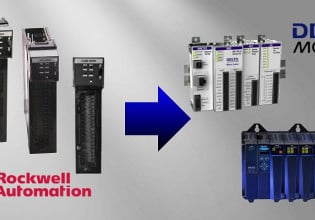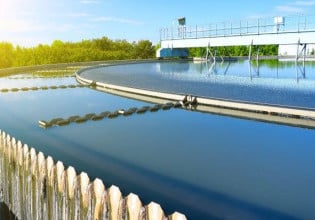Introduction to the Fundamentals of Pneumatic Vacuums
Vacuum pressures are not uncommon, but they can be more complicated than standard air systems. This article explores pneumatic vacuums, exploring applications, uses, and types.
Using an air compressor to create a pneumatic system is extremely common — even many homes and shops have air compressors for filling car tires and using tools. However, generating vacuums is less common, since the applications are more specific, and the concept of vacuums in general is a bit less familiar.
Pressure is almost always listed as a gauge value, meaning that it shows the difference in pressure between the inside of a system as compared to the ambient pressure outside. If you see a value of 0 psi on a gauge, it simply means that there is no difference between the inside and outside of the system, they are all sitting at the normal atmospheric pressure level.
However, in cases where vacuum pressure is needed, the values shown on those gauges can adopt a couple of standards and it’s a bit less clear than for positive pressure systems.
Applications of Vacuums
For most fields of control system technologies, vacuums are used for handling of objects. This might look most familiar as the end tool for a robot gripper, or pick-and-place machine. Vacuums are also heavily used in manufacturing fields where air must be evacuated from a chamber during the process, such as in semiconductors and sealed chambers like light bulbs.
All of these processes rely on the ability to remove air molecules from a system either to achieve work in the case of the robot gripper or the ability to remove the impurities that air and oxygen bring to a system. Air exposure can create oxidation layers on silicon substrates and destroy the conductive abilities of semiconductors. It can also lead to combustion in a typical incandescent bulb, reducing the bulb’s life to just a matter of fractions of a second.
For these reasons and many others in various industries, vacuum systems are not an uncommon occurrence.
Vacuum Pressure
In most ways, vacuum pressure and gauges resemble positive pressure pneumatic systems. However, in a normal system, a pressure of 100 psi would be fairly straightforward - 100 psi more than the outside ambient air. (Other articles already address the difference between absolute and gauge pressure) Vacuum pressures can be stated in one of two ways.
First, a vacuum gauge will most likely show how much pressure the generator is currently developing. This value would increase as the generator power is increasing, and depending on what type of generator is used. The value would begin at 0 psi and increase until it reaches a theoretical limit of 14.7 psi, the same as atmospheric pressure.
Since pressure is the interaction of air molecules, the limit of all vacuum pressure is when no air molecules exist within the space. You cannot achieve less than zero air molecules, so once all of the ambient air pressure has been removed, no more vacuum can be created. In other units, this limit is comparable like this (approximate values):
1 atmosphere = 14.7 psi = 101,000 Pa = 101 kPa, = 29.9 in Hg = 1 bar = 1000 mbar
A gauge that displays the vacuum must be a specifically designed type - most typical gauges will show 0 when the line is disconnected, and they don’t have any values less than 0. Most vacuum specific gauges will have the 0 value on the right side rather than the left. So the value will appear to drop as the developed vacuum gets stronger, but this is actually true - the pressure is dropping.
Sometimes the gauge will show negative values, so the value will progress -10, then -20 kPa, etc, but often this negative sign is removed, assuming the reader understands the gauge. This value is showing how much pressure exists below the normal atmospheric amount. It would be impossible to achieve a pressure exceeding -1 atmosphere, so nearly all vacuum gauges are limited to the range of 0 to 15 psi, or other units of 0 to 100 kPa and 0 to 30 in Hg. Remember that once all the air molecules are removed, no more vacuum can be reached, that’s the end!
There is a second way to report vacuum, and this value is not shown on vacuum gauges, but rather on statistics for vacuum generators and pumps. They may report the final limit of how much pressure will exist when the generator is operating at peak output. If a report states “0.1 bar” in reference to a high-performing vacuum pump, it would be understood that when the pump is fully operational, only 0.1 bar of pressure will remain in the chamber (roughly 1.5 psi).
The type of generator or pump will often give certain limits, for example the very common Venturi vacuum generators commonly used for robot grippers are usually limited to about 10-20 kPa, which means that when they are fully operational, only about 15 kPa might remain. Since 1 atmosphere is 100 kPa, this equates to roughly 85% of a full vacuum.
Not all manufacturers will report the same way, but a quick way to determine the vacuum strength on a datasheet - if the vacuum pressure has a negative sign, this is definitely showing the maximum difference between vacuum and atmosphere.
Types of Vacuum Generators
In very basic terms, there are only a few categories of vacuum generators. However, one can find a huge variety of models and sub-types within each category.
Most common are the Venturi vacuum modules which allow exhaust air to flow past a small opening, and as the air expands into the ambient open room, the pressure decreases causing a vacuum. A third opening draws in air to fill this void, creating suction. When active, they constantly drain air, so they are ideal for limited duty-cycle applications.

Example of a Venturi vacuum module. Image courtesy of Azeer.
Venturi vacuum modules also use more air for larger pressures, so the consumption is greater for larger lifting loads. But they are simple and inexpensive, which are ideal properties. This type of generator is called an ‘ejector’ since it ejects the air, and it might also have an on/off valve integrated with it. Alternatively, simply use an external value to cut off the supply and the vacuum will turn off.
Venturi air ejectors are usually limited to creating about 50 to 90 kPa, fairly close to a full vacuum, but not good enough for some cases. The size of the vacuum pad relates to how many actual lb or kg of lifting force is achieved.
A number of pumps exist for evacuating the air from a sealed chamber. This is better for the situations in which an oxygen-free work environment must be achieved. Many of these work similarly to standard air pumps, but a number of models exist which can reach working pressures within fractions of a Pascal of complete vacuum. Obviously, cost increases with performance.
A Review of Vacuum Pressures
Vacuum pressures are not uncommon, but they can be more complicated than standard air systems. They are most often gauged as decreasing from 0 to -1 atm, although the negative sign may not always be shown. The generators can vary in size and strength, but all will reach that limit of complete air removal at 1 full atmosphere of vacuum.






